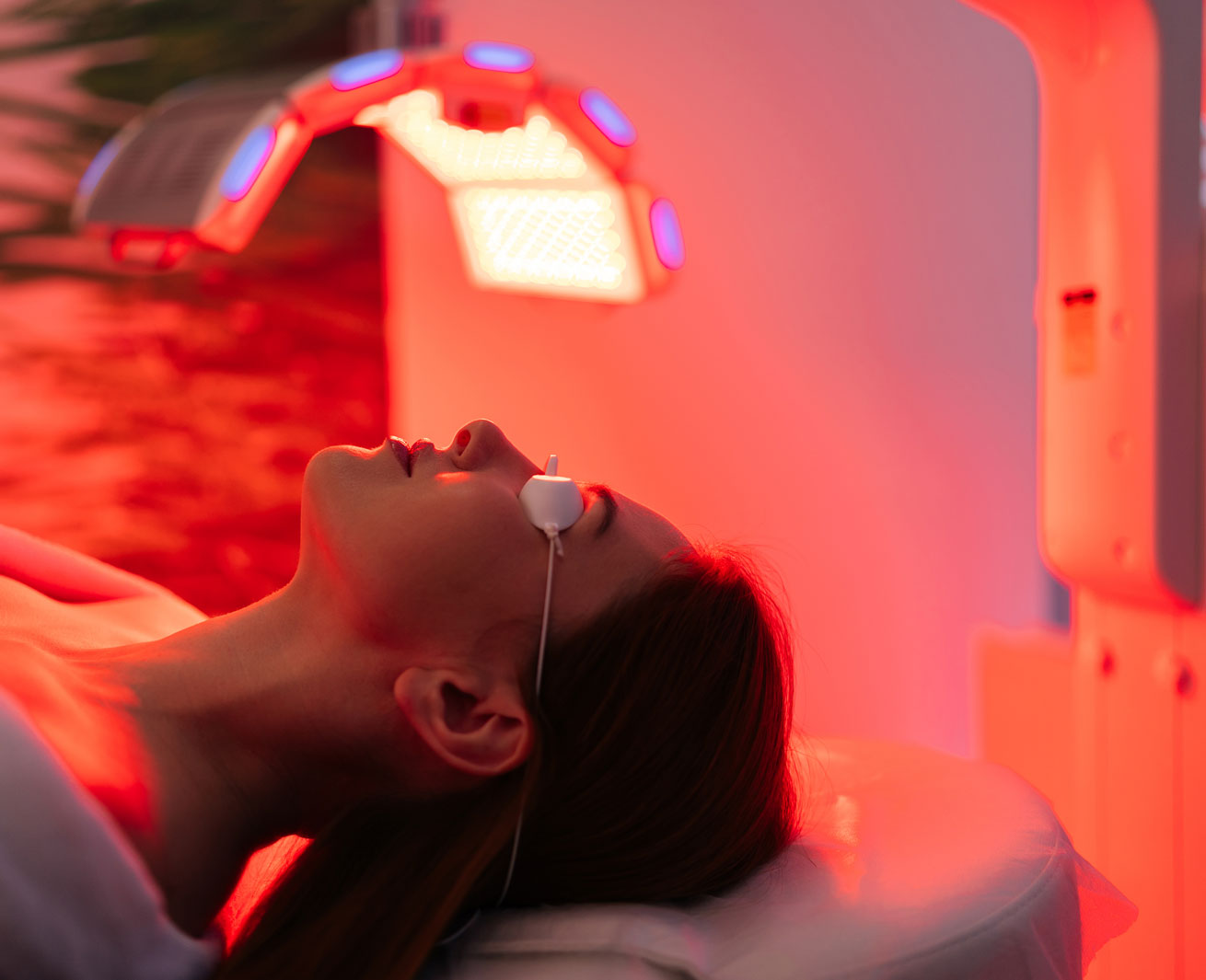- 54 VAS. SOFIAS AVENUE ATHENS 115 28
- (+30) 210 729 75 71
PDT
Photodynamic Therapy (PDT): A Phototherapy for the Skin
What is PDT?
Photodynamic Therapy (PDT) is a non-invasive treatment based on the science of photobiomodulation. It involves applying a specialized cream that triggers immune responses in the skin after exposure to light of a specific wavelength provided by a special device. This photosensitizing substance is absorbed exclusively by the targeted skin cells, whether for medical or aesthetic purposes.
Steps of the Procedure
1. A photosensitizing cream (5-ALA) is applied to the treatment area.
2. The affected skin cells selectively absorb the cream.
3. The light from a specialized phototherapy device activates the sensitized cells, producing Reactive Oxygen Species (ROS) through a series of metabolic processes. These compounds are toxic to the targeted cells, leading to their self-destruction and programmed cell death (apoptosis).
4. Result: Cells affected by cancer, infection, or photoaging are removed, allowing the skin to regenerate with minimal damage.
Ιndications
• Actinic keratosis (precancerous skin lesions)
• Superficial basal cell carcinoma (skin cancer)
• Acne (reduces bacteria and inflammation)
• Rosacea & redness (improves skin appearance)
• Photoaging & sun damage (boosts collagen production)
Benefits
• Non-invasive: Appropriate for those who do not wish surgery.
• Targeted treatment: Affects only the necessary cells.
• Fast recovery: Mild redness and peeling resolve in a few days.
What to Expect?
• During: Mild tingling and warmth.
• After: Redness, swelling, or peeling for a few days.
• Avoid sun exposure until the skin barrier fully recovers.
Is it Safe?
PDT is totally safe. The individuals excluded are those with history of photosensitivity.
Conclusion
PDT is a safe and effective treatment for various skin conditions. If you have sun damage, acne, precancerous or cancerous skin lesions, PDT can help you address them.

